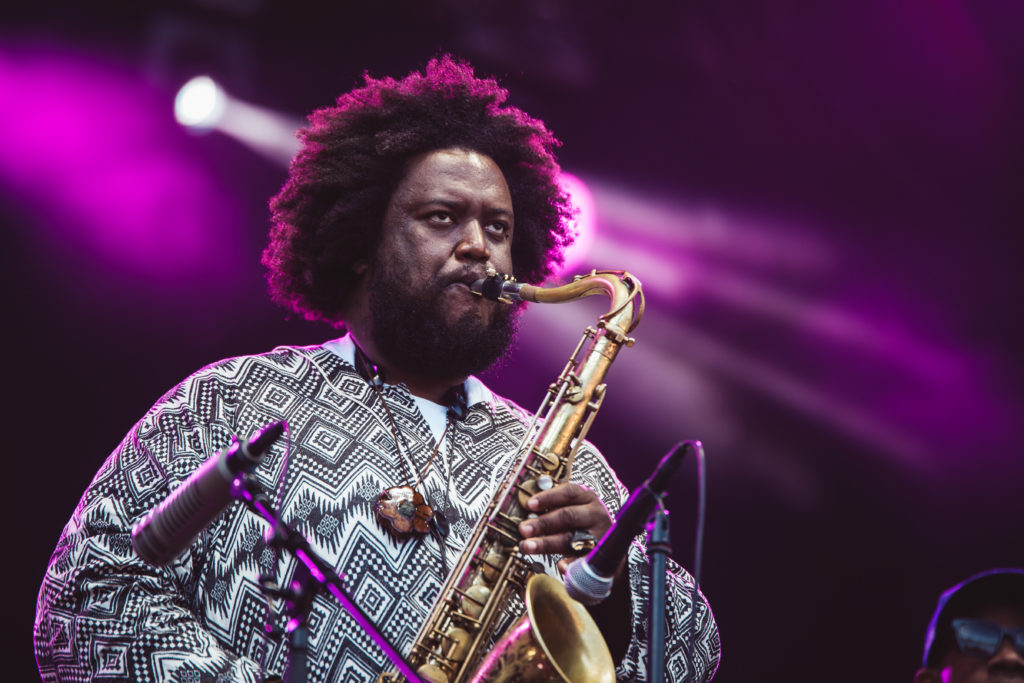
Since jazz’s coming of age in the early 20th century, classical and jazz musicians have been influencing and borrowing from one another, creating some bold and innovative music along the way. From the early syncopations of Scott Joplin and George Gershwin to modern interpretations of classics from the likes of Kamasi Washington, jazz and classical music have been combined in harmony for over a century.
In celebration of 91Classical’s Classical Crossroads, a new programming feature exploring music that blurs the line between classical and other genres, here’s the second in a series of digital mixtapes compiled on a Classical Crossroads theme. Volume 2: Classical x Jazz is just the tip of the musical iceberg, representing a vast body of diverse music that incorporates elements of both styles.
J.S. Bach: Concerto for Two Violins, Strings, and Continuo in D, BWV 1043 (performed by Eddie South, Stéphane Grappelli and Django Reinhardt)
When African-American violin prodigy Eddie South found his opportunities in classical music restricted, he made the transition to jazz—but he continued to use his classical chops. This 1937 recording with famed French Gypsy jazzers Stéphane Grappelli and Django Reinhardt is one of the first jazz interpretations of Bach’s music.
Walter Donaldson & Gus Kahn: “Love Me Or Leave Me” (performed by Nina Simone)
Like Eddie South, Eunice Waymon had her sights set on a career as a classical performer when she was denied a scholarship to the Curtis Institute, despite a successful audition. Convinced her rejection was entirely due to discrimination, Waymon changed her name to Nina Simone and launched a career performing jazz that was, perhaps unsurprisingly, influenced by classical music. Her take on “Love Me or Leave Me” features a piano solo of Bach-esque counterpoint.
Claude Debussy: Clair de Lune (performed by Kamasi Washington)
Producer, bandleader and jazz saxophonist Kamasi Washington in no stranger to genre-blending. He served as musical director for Kendrick Lamar’s hip hop opus To Pimp A Butterfly, which was named best album of the year by Rolling Stone, Pitchfork, Billboard and others. Washington’s own album The Epic also made an appearance of several of those lists, and the record includes this adventurous take on Debussy’s impressionist masterpiece, complete with soaring B3 organ and lilting saxophone melodies.
Frederic Chopin: Valse in c-sharp minor, Op. 64 No. 2 (performed by Eugen Cicero)
With a nickname like “Mister Golden Hands,” it’s no wonder that Romanian-German pianist Eugen Cicero got his start performing Mozart piano concertos at age six. Cicero went on to study music at the National Conservatory in Bucharest, and soon began to improvise swung versions of classical works. Eventually he forged a career by performing and recording music that blurred the lines between classical and swing.
Peter Ilyich Tchaikovsky: Dance of the Sugar Plum Fairy (performed by Duke Ellington as “Sugar Rum Cherry”)
Take the sugar plum fairy from the ballet stage, put her in a smoky bar and gave her a few too many piña coladas, and you might end up with Duke Ellington’s “Sugar Rum Cherry.” This sultry interpretation was part of a 1960 recording of jazz interpretations of Tchaikovsky’s entire Nutcracker Suite, arranged by Ellington and Billy Strayhorn.
George Frideric Handel: Sinfonia (from Alcina HWV 34) (performed by L’Arpeggiata) Christina Pluhar
You may have heard this piece recently air during our Wednesday night Classical Crossroads feature, but if not, don’t miss it here. Under the direction of theorbo player Christina Pluhar, L’Arpeggiata transforms the short sinfonia from from Act 3 of Handel’s opera seria Alcina into a 5-minute amalgamation of baroque strings, jazz syncopation, piano improvisation and—just when you think it can’t get any cooler—traditional klezmer music.
Bobby McFerrin & Chick Corea: Song for Amadeus (Improvisation on Mozart’s Sonata No. 2 in F Major, K. 280: II. Adagio.)
https://www.youtube.com/watch?v=NNfrvsWNHcA
Both jazz pianist Chick Corea and vocalist Bobby McFerrin recognized Mozart as a master improviser when they set out to release their 1996 recorded collaboration The Mozart Sessions. Both performers describe the “long-abandoned” practice of improvisation as being at the core of their explorations of the album, with Corea playing his own cadenzas in the concertos, and McFerrin providing improvised vocal introductions. The final work on the album is a joint improvisation on a Mozart sonata.
Tune in every Wednesday night at 6:06 PM to hear Classical Crossroads on 91Classical.